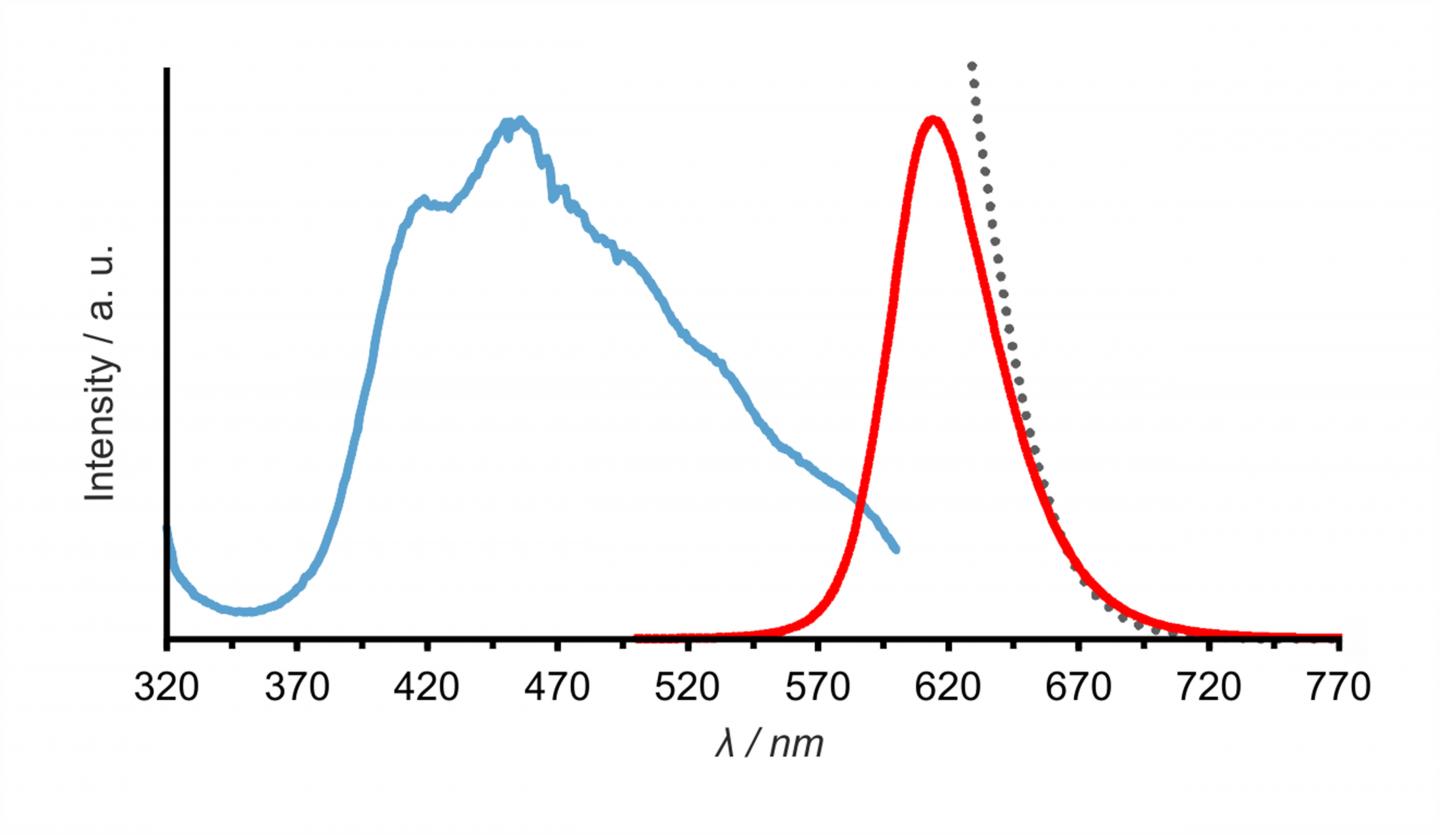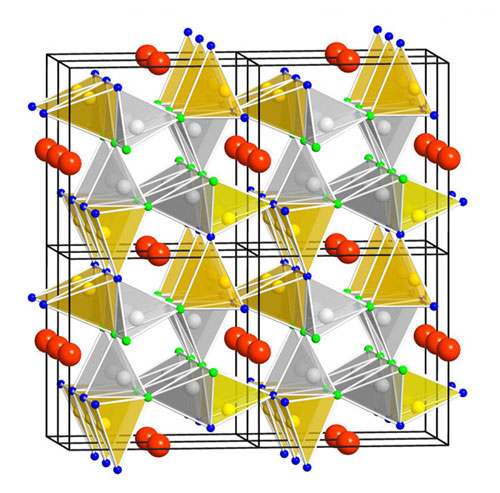
New Red Phosphor Could Make LEDs More Energy-Efficient
A team at the University of Innsbruck, in cooperation with OSRAM Opto Semiconductors, has synthesized a new high-performing red phosphor for LEDs that could make LED lighting more energy-efficient.
The new phosphor, called SALON by the researchers, has slightly shifted the light emission from red toward blue. “The substance is synthesized in such a way that it emits more orange than red,” said professor Hubert Huppertz.

Shifting the color from red to orange improves the luminous efficacy. Courtesy of the University of Innsbruck.
Although phosphors emit red light in the visible range, a large part of the energy goes into the IR range. “With SALON we have less energy loss; it emits exactly in the red range we can see,” Huppertz said.

The crystal structure of the SALON phosphor is the reason for its excellent luminescence properties. Courtesy of the University of Innsbruck.
The synthesis of the SALON phosphor was challenging and came only after the researchers were able to isolate a single crystal from one of the most promising synthesis products and thus determine the structure of the new material. In experiments, a white, midpower, phosphor-converted LED prototype using the SALON phosphor as its red component showed an increase of 16% in luminous efficacy compared to currently available commercial high-color rendering phosphor-converted LEDs, while retaining a high quality of light.
SALON meets all the requirements for a phosphor’s optical properties, the researchers said. It combines the optimal spectral position for a red phosphor with an exceptionally small spectral full width at half maximum and good thermal stability. The team believes that the new phosphor could significantly improve energy efficiency of white-emitting phosphor-converted LEDS.
The Fraunhofer Institute for Microstructures of Materials and Systems IMWS and the Ludwig Maximilian University were also involved in characterizing the new material, which has been registered for patent.
The research was published in Nature Communications (https://doi.org/10.1038/s41467-019-09632-w).
/Buyers_Guide/Osram_Opto_Semiconductors_Inc/c20193